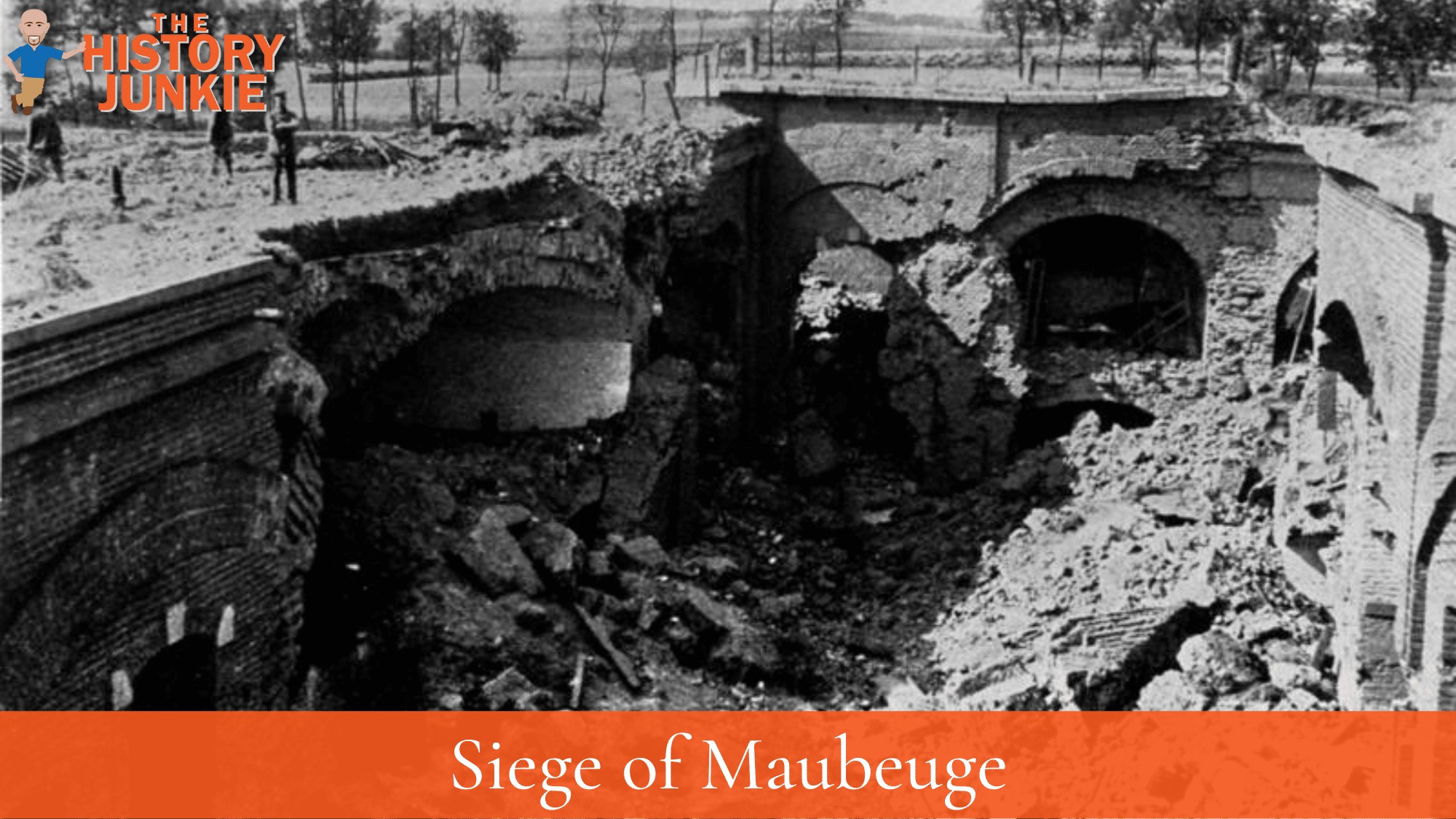The Siege of Maubeuge was another German victory that demolished a major fort on France's northern border of Belgium on the River Sambre.

Although the siege would be a German victory, it did expose the Schlieffen Plan as risky, despite it being effective at this point of World War 1.
On the junction of no fewer than five railway lines, the town was consequently considered a key strategic location, hence the construction of 15 forts and gun batteries around it, totaling some 435 guns.
The town's permanent garrison of 35,000 troops was initially bolstered by its selection as the advance base of the newly arriving British Expeditionary Force under Sir John French.
Fifth Army on August 23, 1914, the town was cut off from Allied forces and came under siege by the Germans on August 25. The town was finally surrendered by General Fournier to the Germans some 13 days later (court-martialed after the war for this action, the General was eventually exonerated).
Parts of Maubeuge were set on fire, causing an exodus of civilians and deserters to the village of Hautmont to the southwest.
From September 1-7, the French were forced out into the open, and infantry attacks from the east gradually overran the French defenses on both sides of the Sambre, forcing the survivors back level with Maubeuge.
Brigadier-General Joseph Fournier, the governor of Maubeuge, surrendered to General Hans von Zwehl on September 7, effective at noon the next day.
The French suffered 5,000 casualties, and up to 49,000 troops went into captivity, along with several hundred guns and machine guns; German casualties were 1,100-5,000 men.
The garrison had withstood bombardment by heavy and super-heavy artillery, air raids, and infantry attacks for fifteen days, longer than any other besieged fortress in Belgium or France, leaving the German 2nd Army short of troops as it pursued the Franco-British Armies southwards towards the Marne.
